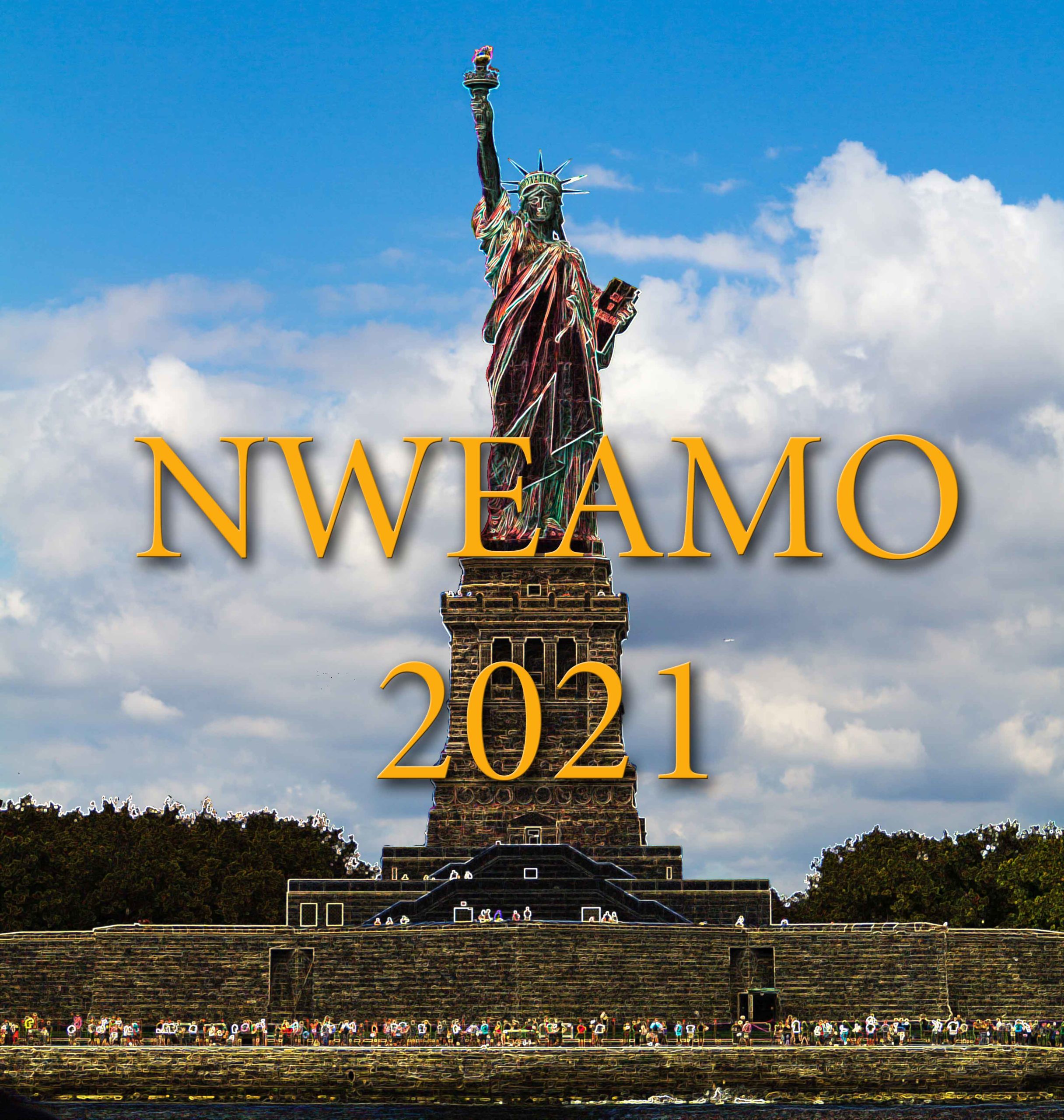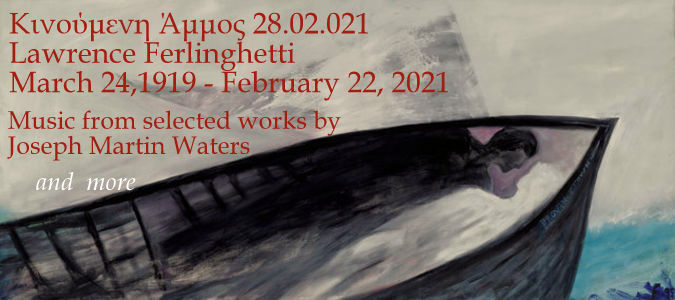NWEAMO 2021 Part Three

Introduction to NWEAMO 2021
The third section of NWEAMO 2021
has no playlist, and can be enjoyed individually.
NWEAMO 2022
Gene Pritsker & Todd Rewoldt "Duets For The End Of The World"
Also on the program will be works by Debra Kaye & Da Cooper as well as Southern California composers Texu Kim, Madelyn Byrne, Aaron Alter
The Magic Hummingbird at The Cutting Room, NYC
Bringing Waters’ songs to life, at Nweamo and New York City, are an eclectic group of singers including the amazing, versatile Leonard Patton, whose three octave range, from Baritone through Countertenor, is put to full use in Waters’ score. Breakout soprano Karen Garcia, who has been working with Waters over the last six years in the germination and development of the work. Ms. Garcia has a luminous upper range that blooms above the staff. She performs the role of Apollonia, a mystical creature, half human and half plant in the opera. At the Nweamo concert she will be performing “We“ based on the sacred poetry of Mexican curandera Maria Sabina.
Joining in duets with Patton will be Cat Rojo, performing the role of Clara, based on St. Clara from the Saint Francis mythology upon which the opera is loosely based. Patton plays Franklin, tortured and talented friend and sometimes frenemy of Saint Francis. The opera is about breaking borders, set equally in Tijuana and San Diego, and between a group of refugees and a white separatist cult, led by an insane, Trump-like sociopath The Preacher.
Alto March 1, 2021 Bushwick Aberdeen
zuriel waters
alto, bushwick aberdeen L stop manhattan bound east end
Cadences
Scott Lindroth
Cadences was inspired by Richard Powers’ beautiful 2014 novel Orfeo. The story centers on a contemporary composer as its protagonist and traces his career from its roots in American experimental music in the 1950s and 60s to the present day, when he is a fugitive from the law under suspicion of being a bioterroist. There is a beautiful passage early in the book in which Powers speculates through his composer-protagonist, Peter Els, about the sources of musical inspiration:
“In the Fall of 2009, while fast walking his dog Fidelio around the long loop of the arboretum, sixty-eight year old Peter Els watched a wet oak leaf fly through the air and stick to his windbreaker. He peeled the leaf free, studied its surface, and saw rhythms inscribed in the branching veins. He sat down, a little dazed, on a boulder at the side of the path. His hand grazed the rock’s surface, and the pits played pitches like a piano roll on his skin. He looked up. Phrases floated across the sky in cloud banks and songs skittered in twigs down the staggered shingles of a nearby roof. All around him a massive secret chorus written in extended alternate notation lay ripe for transcribing.”
I found this vision of music creation to be liberating, and it prompted me to take a more daring approach to composing than I had attempted in some years. In this case, what “lay ripe for transcribing” were the rhythms of Powers reading passages from Orfeo. I wrote these out by hand, and then used a computer to generate extended rhythmic phrases based on fragments of these rhythms. What’s more the computer also suggested melodies for these phrases, though these were not based on Powers’ speech intonation. I then transcribed this raw material into instrumental music.
Much of the piece is based on these rhythms – quirky, aperiodic, but hopefully supple (at times). At the outset they are played as a light staccato in rhythmic unison. Later on, each instrument has its own speech rhythm to produce a complex counterpoint, as if several people are speaking at once. Finally, the speech rhythms give way to a lyrical melody in the violin, which carries the piece to its conclusion. If there is any musical representation of the novel’s plot, it is here, as Peter Els comes to terms with his artistic and personal history while police are breaking down the door of his hiding place.
Cadences was commissioned by the Electric Earth Concert Series and premiered in August 2016.
(Chief) Seattle Meditation
STEVE ROWLAND
This is a meditation on the history of human displacement and real-estate covenants used to exclude specific ethnic groups. in Seattle over the past 130 years or so. This is a four-screen video – meant to be shown in a gallery setting on 4 large monitors. It is hoped that the viewer will experience the patterns and rhythms of the interplay between the 4 screens as part of its ‘musicality’.
CINEMATOGRAPHY, STILL PHOTOGRAPHY, VIDEO EDITING, & MUSIC.
HISTORIC PHOTOS ARE EITHER IN PUBLIC DOMAIN OR WERE LICENSED.
Lawrence Ferlinghetti
March 24, 1919 — February 22, 2021
George Pettis
It will be great if you have a Greek speaking friend so you can listen the show together and he / she can help you understand what is happening.
Some details: I call my program «Κινούμενη Άμμος». The first word means “Moving” and the second one, “Sand”. It’s the Greek expression for the Quicksand phenomenon. Usually, I read poetry and short stories – often from the science fiction classics and a selection of dark writers, combined with lots of music from all different times, from 11th century for example, renaissance, classics, contemporary, rock mainly from the 60s & 70s etc.
Playlist:
NWEAMO 2022
Gene Pritsker & Todd Rewoldt "Duets For The End Of The World"
Also on the program will be works by Debra Kaye & Da Cooper as well as Southern California composers Texu Kim, Madelyn Byrne, Aaron Alter
The Magic Hummingbird at The Cutting Room, NYC
Bringing Waters’ songs to life, at Nweamo and New York City, are an eclectic group of singers including the amazing, versatile Leonard Patton, whose three octave range, from Baritone through Countertenor, is put to full use in Waters’ score. Breakout soprano Karen Garcia, who has been working with Waters over the last six years in the germination and development of the work. Ms. Garcia has a luminous upper range that blooms above the staff. She performs the role of Apollonia, a mystical creature, half human and half plant in the opera. At the Nweamo concert she will be performing “We“ based on the sacred poetry of Mexican curandera Maria Sabina.
Joining in duets with Patton will be Cat Rojo, performing the role of Clara, based on St. Clara from the Saint Francis mythology upon which the opera is loosely based. Patton plays Franklin, tortured and talented friend and sometimes frenemy of Saint Francis. The opera is about breaking borders, set equally in Tijuana and San Diego, and between a group of refugees and a white separatist cult, led by an insane, Trump-like sociopath The Preacher.


